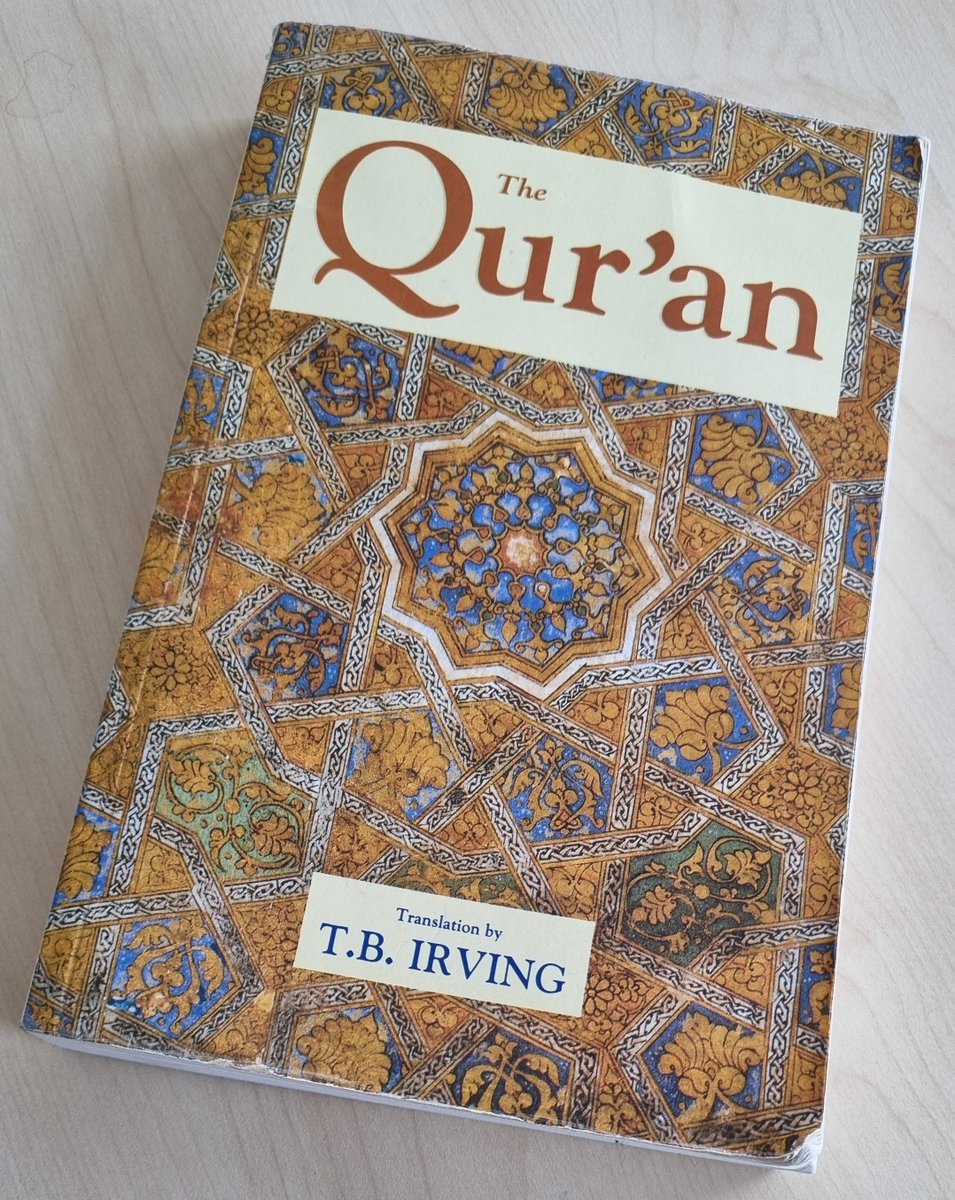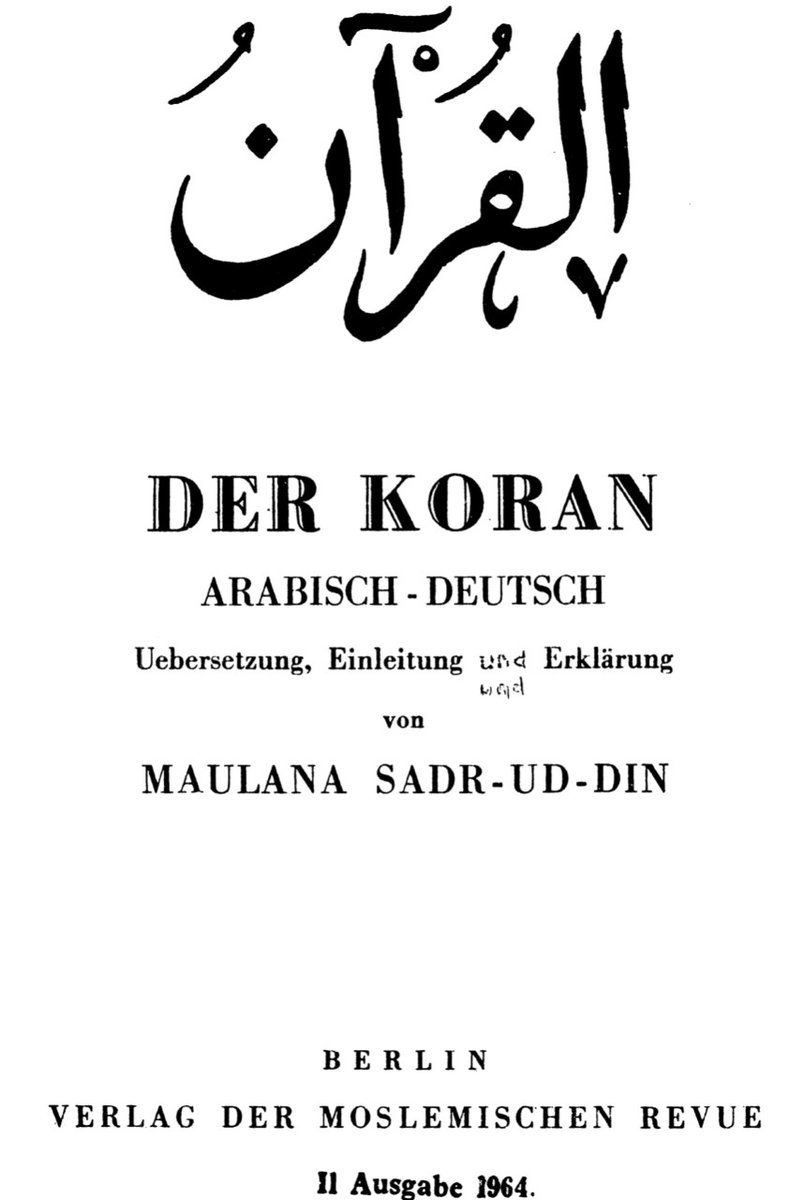Our latest #qurantranslationoftheweek 🌍🇸🇪 is a guest contribution by Nora S. Eggen, University of Oslo.
Mohammed Knut Bernström, Koranens budskap - with comments by Muhammad Asad, Stockholm: Proprius förlag, 1998).
Mohammed Knut Bernström, Koranens budskap - with comments by Muhammad Asad, Stockholm: Proprius förlag, 1998).

The translation of the Qur’an in Europe is a history of retranslation: even if the translator is working directly with the Arabic text, s/he also refers to other translations into the same or a different language.
The Swedish translator & diplomat Mohammed Knut Bernström (1919-2009) positioned his new translation critically to the Swedish translation by Karl W. Zetterstéen (Koranen, 1917, reprinted with comments by C. Toll 1979), and positively to M. Asad’s Message of the Qur'an (1980).
Bernström explicitly presents his translation as an interpretation, both through the title Koranens budskap (cf. Asad), and through discursive pretextual materials such as its introduction, footnotes and appendixes (translated from Asad with additional notes from Bernström). 

Bernström aimed to reproduce lexical coherence as well as to render the semantic content, rather than later terminological content. Thus, islām, aslama and muslim are rendered throughout with verbs, nouns & adjectives cognate to "submission to God" (“underkastelse under Gud”).
In other instances, however, the polysemic nature of Qur'anic language makes it necessary to translate a word like dīn with different concepts like “tro” (‘faith’), “dyrkan” ( ‘worship’), “det religiösa regelverket” (‘the religious rules’) or “religion”.
A number of grammatical, lexical and stylistic choices are made to reflect a certain understanding of the pragmatic, semantic and aesthetic values in the source text. Compared to his most immediate predecessor Zetterstéen, the target text is sometimes more economical.
For instance, where Zetterstéen sprinkles his text with a selection of adverbs to reproduce emphatic discursive markers such as la-qad and inna, Bernström omits these markers to achieve a stylistic makeup closer to the target language conventions.
In 4:34 describing men’s role in relation to women, Zetterstéen translates the word qawwāmūna with the clearly hierarchical notion “föreståndare” ( ‘supervisor’), but Bernström opts for two words to convey an idea of combined responsibility and care: “ansvar för och omsorg om”.
Bernström also interprets the sentence prescriptively: “Männen skall ha ansvar för och omsorg om kvinnorna …” (‘shall have responsibility and care for’ rather than the non-modal alternative ‘has responsibility’).
In this interpretation, Bernström follows Asad, but as in many other instances, there are some subtle differences as well, as with Asad’s lexical choice: “Men shall take full care of women…”
Although an individual endeavour, Bernström’s work was approved by Al-Azhar University upon examination by Swedish experts. Since it was first published, Bernström’s translation has received both academic recognition and popularity with Muslim audiences and in wider society.
Unlike Zetterstéen's, Bernström’s translation is available online (koranensbudskap.se) - the approach is clearly acknowledged on the opening page, and in-text marks like (…) and […] are reproduced. However, the interpretation appears more decisive than in the original. 

E.g. 4:14, fa-yuḍillu llāhu man yashāʾu wa-yahdī man yashāʾu. The Arabic allows for two interpretations: that God leads astray whoever wants to be led astray and guides *whoever wants* to be guided; or, more conventionally, that God leads astray and guides whomever *He* wills.
Bernström follows Asad in opting for the first interpretation, but the other is discussed in a footnote. However, since footnotes are not included in the online edition, the discursive element is omitted and the ambiguity of the text is left unremarked.
If we see a translation as an integrated work combining main text and pretextual commentary, the online edition may be understood as a retranslation: another interpretational contribution to the ever-growing chain of retranslations of the Qur'an.
#qurantranslationoftheweek 🌍
#qurantranslationoftheweek 🌍
• • •
Missing some Tweet in this thread? You can try to
force a refresh

















